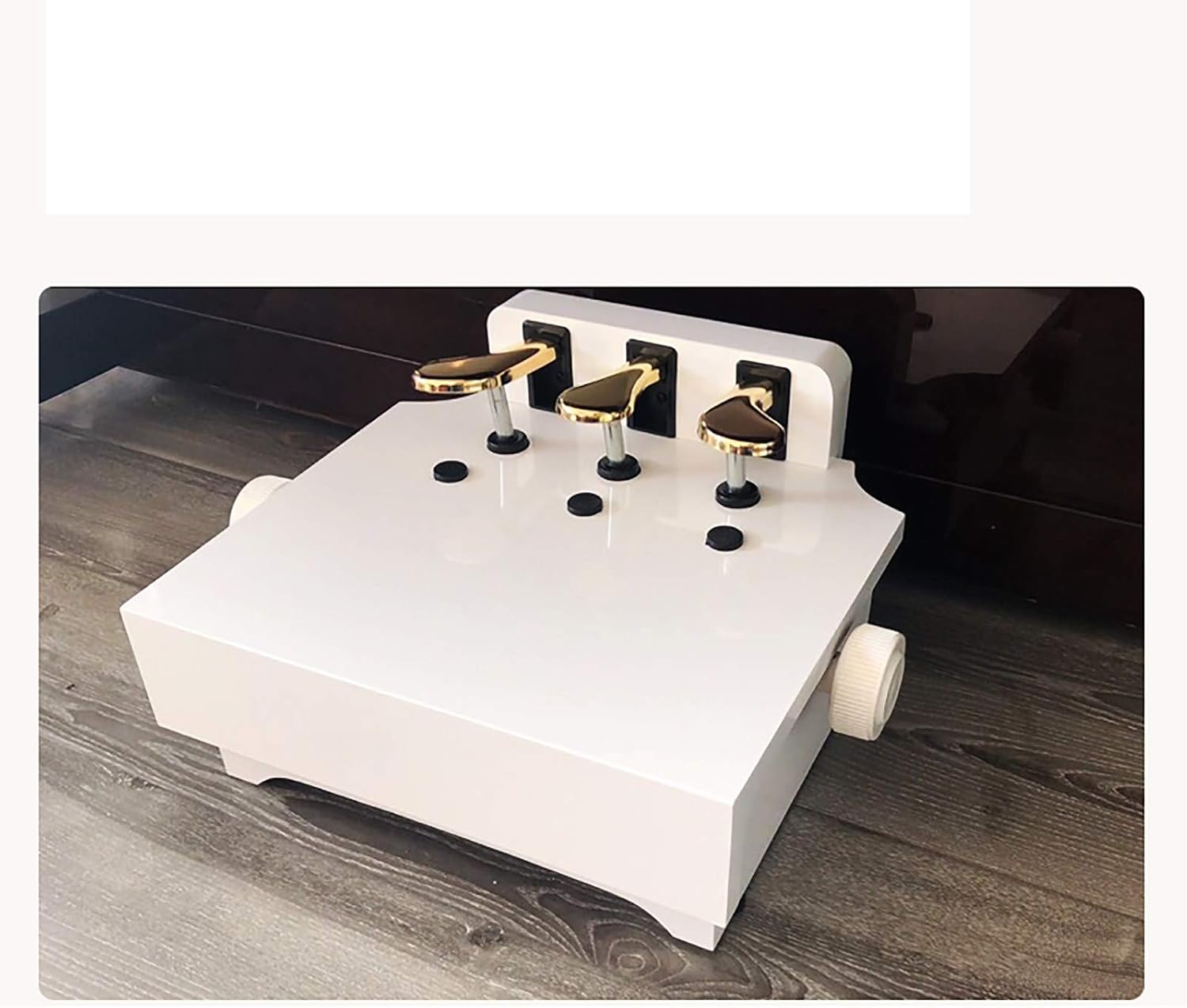
Piano Pedal Extensions,Steel Auxiliary Piano Pedal Extenders for Children with 3 Pedals Adjustable Piano Pedal Extension Bench for Beginners and Children,White
FREE Shipping
Piano Pedal Extensions,Steel Auxiliary Piano Pedal Extenders for Children with 3 Pedals Adjustable Piano Pedal Extension Bench for Beginners and Children,White
- Brand: Unbranded

Description
Table piano with Turkish pedal, J.Pfeiffer, Paris, 1818, inv.3320". Musical Instrument Museum, Brussels. CPS Imports - piano pedal extender (adjustable piano foot pedal stool). Your source for piano pedal extenders and pedal extension at competitive prices. Using a piano pedal extension device is very simple as well. It does not require altering the piano in any sort of way. All you have to do is place the device next to the piano pedals, adjust the height to wear to wish, and you are set!
Piano pedal extenders are worth it as they are typically quite inexpensive and allow a child to correctly play the piano while learning correct posture and position.There are lot of kids who get started on the piano quite early and show impressive skills. To help them learn the proper techniques, its important that they learn how to use the pedals.
The overall quality of the HOSEYIN Wood Adjustable Lifting Piano Pedal Extender Bench is excellent. The solid wood construction and polished brass pedals not only provide strength and stability but also enhance the overall aesthetic appeal. The inclusion of silicone buffer pads signifies the attention to detail given to protecting both the pedal extender and the piano from any potential damage.As best shown in FIG. 3, the screw 22 that secures the pedal 16 to the channel section 18 has a slotted lower end for receiving one end of a small elongated link 26 which is pivotally connected to the end of the screw 22 by a suitable pivot pin. As will be subsequently described in greater detail, the lower end of the link 26 is coupled by a suitable pivot pin to the upper end of a tubular actuator shaft 28 which, upon the depressing of the pedal 16, moves to depress the piano pedal 30. Try to observe the sitting position this young talented pianist is in. She is sitting on the top half of the bench, her arms are at a good position for playing, and her feet are resting comfortable on the piano extension pedal bench. Famous for his pianos, Muzio Clementi was a composer and musician who founded a piano-building company, and was active in the designing of the pianos that his company built. The Clementi piano firm was later renamed Collard and Collard in 1830, two years before Clementi's death. Clementi added a feature called a harmonic swell. [ citation needed] "[This pedal] introduced a kind of reverberation effect to give the instrument a fuller, richer sound. The effect uses the sympathetic vibrations set up in the untuned non-speaking length of the strings. Here the soundboard is bigger than usual to accommodate a second bridge (the 'bridge of reverberation')." [17] Piano pedal extenders have been around for quite some time, and their popularity has continued to grow. They were originally designed to meet the needs of young children who struggle to reach the piano pedals due to their shorter stature. Over time, the design and functionality of these extenders have evolved, offering height adjustability and additional pedal options. The benefits of owning a piano pedal extender are numerous. Firstly, it promotes proper technique by enabling individuals to achieve the correct pedal position without straining or contorting their bodies. This can improve sound quality and overall performance. Secondly, it enhances the playing experience for children, allowing them to fully engage with the piano and build a strong musical foundation from a young age. The last pedal added to the modern grand was the middle pedal, the sostenuto, which was inspired by the French. Using this pedal, a pianist can sustain selected notes, while other notes remain unaffected. The sostenuto was first shown at the French Industrial Exposition of 1844 in Paris, by Boisselot & Fils, a Marseille company. French piano builders Alexandre François Debain and Claude Montal built sostenuto mechanisms in 1860 and 1862, respectively. These innovative efforts did not immediately catch on with other piano builders. In 1874, Albert Steinway perfected and patented the sostenuto pedal. [9] He began to advertise it publicly in 1876, and soon the Steinway company was including it on all of their grands and their high-end uprights. [10]
- Fruugo ID: 258392218-563234582
- EAN: 764486781913
-
Sold by: Fruugo
